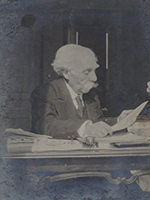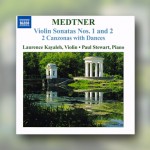Some ideas on music & musical program – May 2017 – Tokyo, Japan By Violinist Laurence Kayaleh
Dear Friends of Music,
Since the early stages of my artistic life, I was eager to learn new repertoire. Of course, there is always endless beauty to discover in music, even in the regularly performed repertoire. The musical literature is incredibly rich, inspired, and inspiring. Every time I work on a Brahms or Beethoven sonata, or any work of the standard repertoire, I approach it as if it were the first time I read it, even if I have already performed it many times in concert. Music grows, as we grow as human beings. The general conception of interpretation, and the understanding of composers’ indications become much deeper with time and experience. A genuine artist never knows a work completely, even after years of dedication. The artistic evolution is constant; it never ends. This is also the beauty of the Arts.
The repertoire written for the violin is vast (although not as vast as the piano’s!).
Even though I regularly perform and cover well-known repertoire ranging from the Baroque through the contemporary eras, I believe it is also my role, as a performer, to present lesser-known works but very inspired to a larger audience. There are some remarkable jewels out there yet to be explored—a real gold mine.
Karol Szymanowski’s Sonata for Violin & Piano in D minor Op. 9 was composed in 1904, in Warsaw. It was created in April 1909 by violinist Paul Kochanski and pianist Arthur Rubinstein. The work was composed in the style of late Romanticism which he highly appreciated and respected at that time. The work is dedicated to Bronisław Gromadzki, an amateur violinist and good friend of Szymanowski. The young Szymanowski, a pupil of Zygmunt Noskowski, was then 21 years old. He demonstrates in this work a very fine mastery of the classical form.
Gabriel Fauré’s Sonata for Violin & Piano No. 2 in E minor, Op. 108 is a masterpiece of artistic depth. It was written in 1916, five years before his sublime Piano Quintet in C minor Op. 115 (1921), and only eight years before his death. The human and musical evolution in the 40 years between his first and second violin sonatas is quite striking. The work certainly reflects and expresses World War I torment and human suffering… The musical writing demonstrates great inspiration and maturity.
Sonata Op. 108 was written during the third period of his life throughout which Fauré was suffering from hearing loss problems.
The gorgeous theme in the Andante from the discarded Symphony in D minor of 1884 is full of beauty and expression.
The work was premiered by Lucien Capet and Alfred Cortot on November the 10th, 1917 at the Société Nationale de Musique. The sonata is dedicated to the Queen of Belgium, Her Majesty Elisabeth.
After Szymanowski’s and Fauré’s lesser-known sonatas, the program will conclude with the superb and one of César Franck’s best-known works, his Sonata for Violin & Piano in A major. The sonata was written in 1886. It was Franck’s wedding present to the young violinist and composer, Eugène Ysaÿe. Ysaÿe performed the work for the wedding guests with pianist Léontine Bordes-Pène. Both Ysaÿe and Bordes-Pène gave the first official public performance of the sonata on December 16th, 1886 at the Museum of Modern Painting in Brussels.
The role of a performer is quite subtle. One must follow and respect the musical text and the composer’s indications, while in a way “reimagining” the piece using the eloquent and precise indications given by the composer. There is a distinct but fragile line between what the performer can do or not to serve the composer’s intentions without it being detrimental to the personal interpretation.
The artists need to emphasize the coherence in the sound colors to create a total “communion” between the instruments, thus favoring the general atmosphere and respecting the color of the harmonic architecture. This is always a very critical step in chamber music, made even more complex by the uniqueness of every musician.
© Violinist Laurence Kayaleh – 2017







